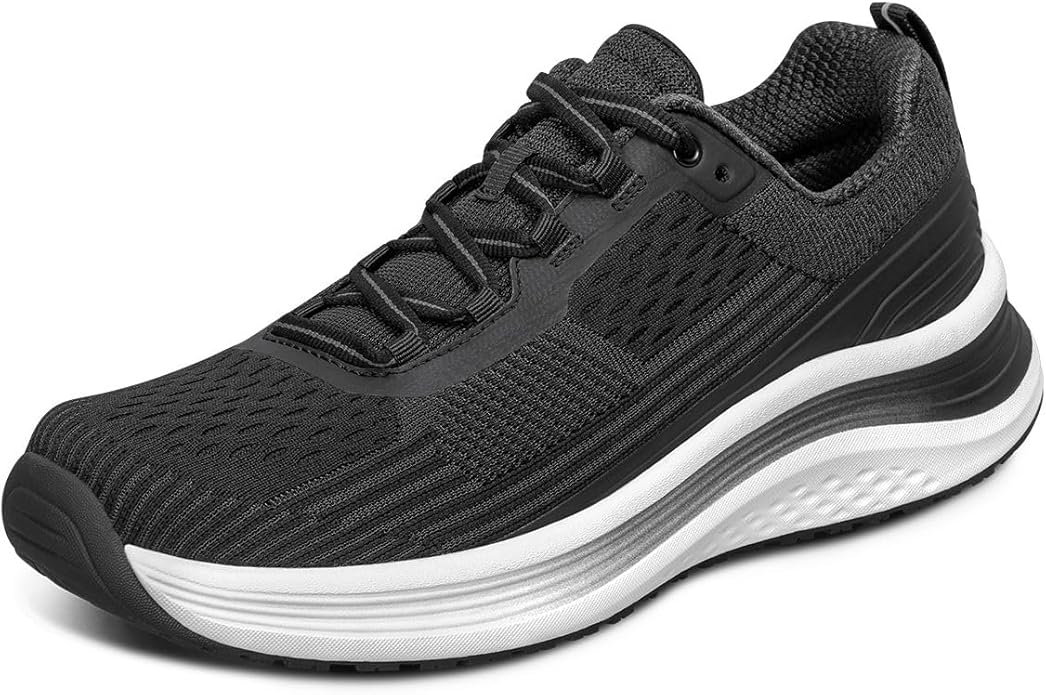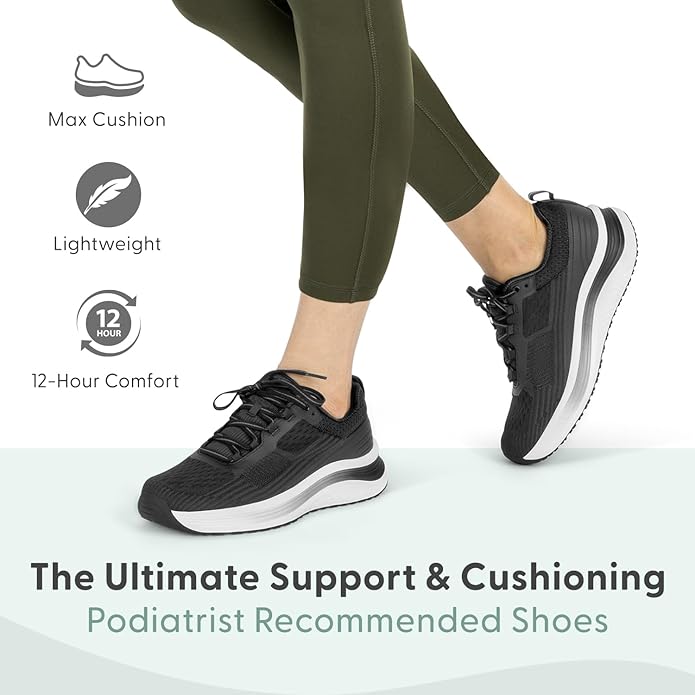Running can be an excellent way to stay fit, but for heavy runners with bad knees, finding the right shoes is crucial. Without proper support and cushioning, running can lead to joint pain, worsening knee issues, and even long-term damage. Fortunately, some shoes are specially engineered to absorb shock, offer stability, and provide lasting comfort. In this guide, we’ll break down what to look for in running shoes, top recommendations, and expert tips for pain-free running.
Why Heavy Runners with Bad Knees Need Specialized Shoes
Heavier runners exert more pressure on their knees and joints, especially when running. If you already suffer from bad knees—due to arthritis, runner’s knee, IT band syndrome, or previous injuries—this stress multiplies.Key Challenges:
- Increased joint impact on every step
- Risk of improper alignment
- Faster wear and tear of regular running shoes
This is why choosing the best running shoes if you have knee pain is not just about comfort—it’s about injury prevention, support, and long-term health.
Features to Look for in the Best Running Shoes
When choosing running shoes, not all pairs are created equal—especially for runners dealing with knee pain. Look for these essential features:
1. Cushioning and Shock Absorption
The more weight you carry, the more shock is transferred to your knees. Shoes with thick midsoles made from EVA foam or gel systems absorb this impact, reducing stress on your joints.
2. Arch and Ankle Support
Heavy runners often experience overpronation (inward rolling of the foot). Motion control or stability shoes can help correct alignment and provide essential ankle support.
3. Wide Base and Heel Support
Shoes with a broad outsole base increase stability and decrease the risk of rolling your ankle, which can worsen knee pain.
4. Durability and High-Quality Materials
Heavier runners tend to wear out shoes faster. Choose models with durable rubber outsoles and reinforced uppers that can withstand high impact and extended use.
Top 7 Best Running Shoes for Heavy Runners with Bad Knees
Below is a curated list of the titled Running Shoes, based on expert reviews, real-user feedback, and biomechanical design.
1. Brooks Glycerin 21
Why it’s great: Known for its ultra-soft DNA LOFT cushioning, the Glycerin 21 offers plush comfort without compromising stability. It’s ideal for runners who want maximum softness and joint protection.
Highlights:
- Thick midsole cushioning
- Excellent heel support
- Wide toe box for added balance
2. ASICS Gel-Kayano 30
Why it’s great: A top choice for overpronators, the Kayano series combines GEL cushioning and stability support for a smooth ride.
Highlights:
- Dynamic DuoMax support system
- Impact Guidance System (IGS) for gait correction
- Premium Ortholite sock liner
3. HOKA ONE ONE Bondi 8
Why it’s great: Designed for ultimate shock absorption, the Bondi 8 features a full-length EVA midsole and a rockered sole for smooth transitions.
Highlights:
- Thick cushioning from heel to toe
- Lightweight for its size
- APMA Seal of Acceptance
4. New Balance Fresh Foam 1080v13
Why it’s great: This shoe offers a plush ride with firm heel support. It’s ideal for heavy runners who need knee-friendly impact control.
Highlights:
- Fresh Foam X midsole for plush comfort
- Hypoknit upper for flexibility and support
- Durable blown rubber outsole
5. Saucony Triumph 22
Why it’s great: Built with PWRRUN+ cushioning, the Triumph provides great energy return and impact protection.
Highlights:
- Excellent for long-distance runners
- Superior arch support
- Breathable mesh upper
6. Mizuno Wave Inspire 20
Why it’s great: This shoe features Mizuno’s signature Wave Plate technology that disperses impact evenly, making it ideal for runners with bad knees.
Highlights:
- Enhanced midfoot support
- Soft, durable U4ic midsole
- Supportive fit without added weight
7. Nike ZoomX Invincible Run Flyknit 3
Why it’s great: Engineered with ZoomX foam, this Nike shoe offers high responsiveness and maximum cushioning.
Highlights:
- Ideal for recovery runs
- Breathable Flyknit upper
- Padded heel collar for ankle stability
How to Choose the Best Running Shoes for You
Before making a purchase, consider your specific foot and gait type. Visiting a podiatrist or specialized running store for a gait analysis can make a huge difference.
Consider the Following:
- Do you have flat feet, high arches, or neutral arches?
- Do you overpronate or supinate?
- What surfaces do you typically run on—road, treadmill, trail?
- Do you prefer soft, plush cushioning or a firmer, more responsive ride?
Understanding these factors will help you pick a product that matches your needs.
Running Tips to Reduce Knee Pain
Even with the right shoes, your running form and habits play a crucial role in managing knee pain. Here are some practical tips:
1. Warm Up Properly
Begin with a dynamic warm-up to get your muscles and joints ready for impact.
2. Maintain a Short Stride
Overstriding increases impact on your knees. Aim for a quicker cadence and shorter stride.
3. Strengthen Supporting Muscles
Incorporate strength training for your quads, glutes, and core to offload pressure from your knees.
4. Run on Softer Surfaces
Whenever possible, run on grass, dirt trails, or a treadmill to reduce joint impact.
5. Replace Shoes Regularly
Don’t wait until your shoes fall apart. Replace your running shoes every 300–500 miles, especially if you’re a heavier runner.
FAQs
Q: How do I know if a running shoe is good for bad knees?
Look for shoes with ample cushioning, motion control (if needed), and a firm heel counter. Avoid minimalist shoes or those with no arch support.
Q: Are cushioned shoes always better for heavy runners with bad knees?
Not always. While cushioning is important, too much softness can cause instability. Balance is key—opt for shoes that offer both cushioning and support.
Q: Can running with bad knees make them worse?
Yes, if you wear improper footwear or use poor form. However, running with the pair and proper technique can actually strengthen the joint and reduce pain over time.
Final Thoughts
Finding the best running shoes for heavy runners with bad knees isn’t just about comfort—it’s about preserving your mobility and preventing further injury. The right pair can make running enjoyable and safe again. Whether you’re just getting started or returning to running after knee pain, investing in a pair designed for your unique needs is worth every step.
Don’t let knee pain stop you from achieving your fitness goals. Equip yourself with the right shoes and run stronger, longer, and pain-free.
For other sports accessories, you can review Samadi Business.


